Citadel paints stand as a cornerstone in the world of miniature painting, specifically tailored for tabletop gaming. Crafted by Games Workshop, these water-based acrylics have become synonymous with bringing gaming miniatures to life.
From the sprawling battlefields of Warhammer to the futuristic landscapes of Warhammer 40,000, Citadel paints offer a palette designed for precision and vibrancy.
This comprehensive range encompasses base, shade, layer, and specialty paints, each serving a distinct purpose in the meticulous art of miniature detailing.
As a favorite among hobbyists, Citadel paints are more than pigments; they’re key to unlocking creativity in the intricate realms of tabletop gaming.
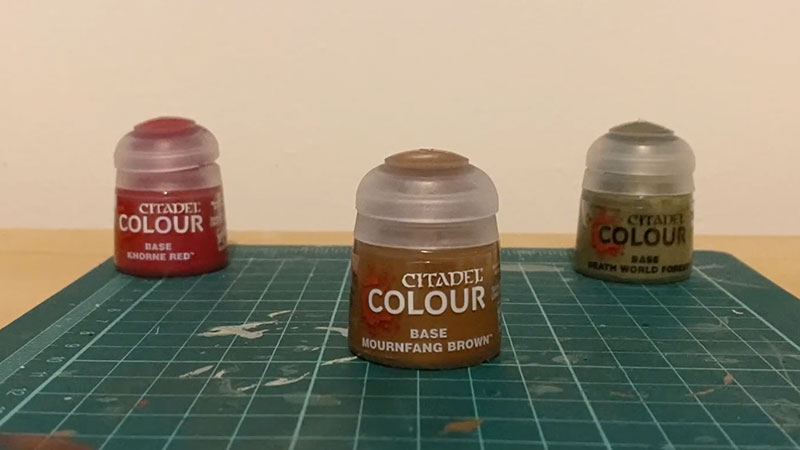
What Type of Paint Is Citadel?
Citadel paints are a type of water-based acrylic paint specifically formulated for painting miniatures, especially those used in tabletop gaming.
Produced by Games Workshop, Citadel paints have become synonymous with the hobby of miniature painting, particularly in the context of games like Warhammer and Warhammer 40,000.
Key features of Citadel paints include:
Water-Based Acrylic
Citadel paints use water as a primary solvent and acrylic as the binder. This composition provides several advantages, including ease of use, quick drying times, and the ability to adhere well to various miniature materials such as plastic, metal, and resin.
Versatility
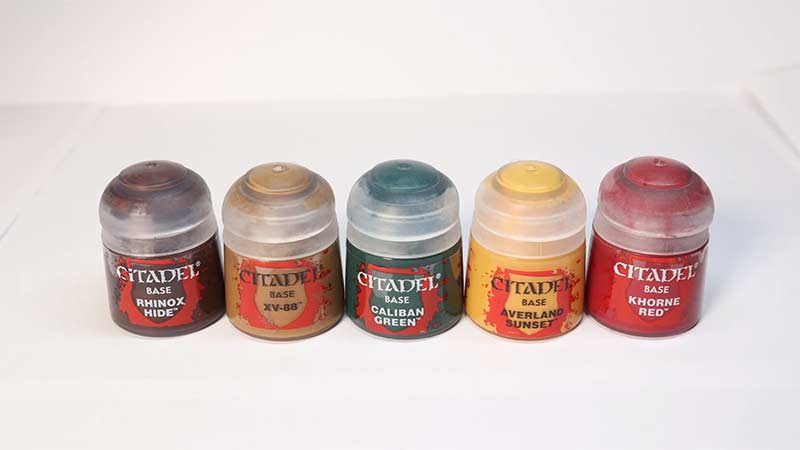
The water-based acrylic formulation makes Citadel paints versatile. Miniature painters can easily manipulate the consistency of the paint, allowing for techniques like layering, blending, and dry brushing to achieve different effects.
Miniature-Focused
Citadel paints are specifically designed for painting miniatures, offering a range of colors and types tailored to the needs of hobbyists working on detailed and intricate models. The paints cater to the specific challenges and requirements of tabletop gaming miniatures.
Comprehensive Range
Citadel offers a comprehensive range of paints, each serving a specific purpose in the painting process.
This includes base paints for primary colors, shade paints for adding depth and shadows, layer paints for highlights, and various specialty paints for effects like dry brushing, glazing, and more.
Popular in the Miniature Hobby
Citadel paints have gained widespread popularity in the miniature painting community due to their quality, consistency, and the extensive color range available.
They are widely used by hobbyists, both beginners and experienced painters, for bringing gaming miniatures to life.
What Are the Ingredients in Citadel Paints?
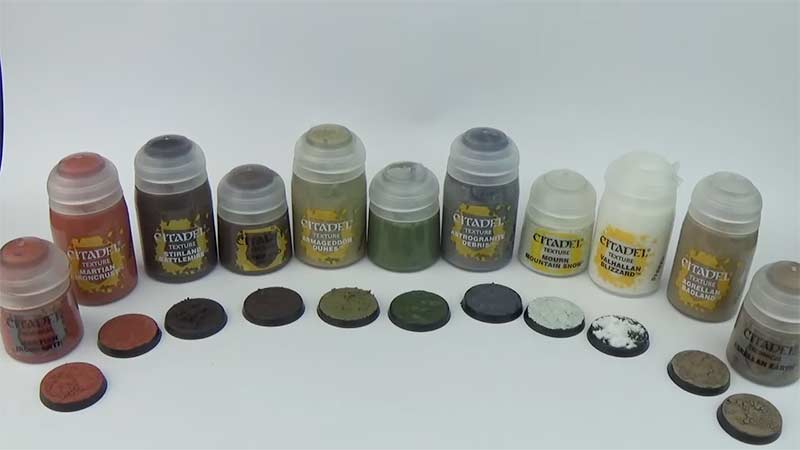
Citadel paints are a popular brand of miniature model paints produced by Games Workshop, commonly used for painting Warhammer and other tabletop gaming miniatures.
The main components of acrylic paints, including those used in Citadel paints, typically include:
Pigments
These are finely ground particles that provide color to the paint. Citadel paints likely use a variety of pigments to create the extensive range of colors available.
Liquid Base
The liquid component of the paint carries the pigments and helps in the application. Water is a common component in acrylic paints, and Citadel paints likely include it along with other chemicals to achieve the desired viscosity and other physical properties.
Binders
These are substances that help the paint adhere to the surface of the miniature model. Acrylic paints typically use polymer binders, and Citadel paints are likely to contain similar compounds to ensure good adhesion.
Fillers
Some ingredients may be added to adjust the texture, opacity, or other characteristics of the paint. These fillers contribute to the overall performance of the paint during application.
Additives
Various chemicals may be included for specific purposes, such as improving drying time, extending shelf life, enhancing flow, or achieving other desired properties.
Are Citadel Paints Acrylic?
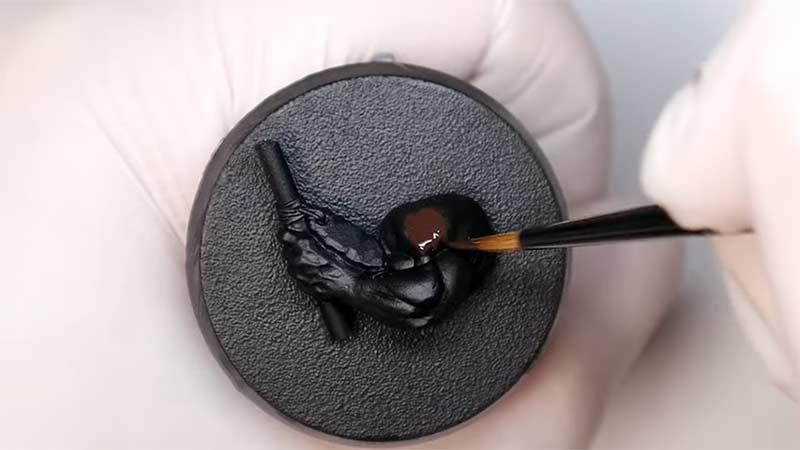
Yes, Citadel paints are water-based acrylic paints. They are specifically formulated for miniature painting, particularly for use on tabletop gaming miniatures such as those in the Warhammer and Warhammer 40,000 universes, which are produced by Games Workshop.
Being acrylic paints, Citadel paints have several advantages for miniature painters. They dry relatively quickly, allowing for efficient layering and detailing during the painting process.
Additionally, they are water-soluble and easy to clean up with water, making them user-friendly.
Acrylic paints are known for their versatility and can be used on various surfaces, including plastic, metal, and resin, which are commonly used materials for miniature models in the gaming hobby.
Are Citadel Paints Water-Based?
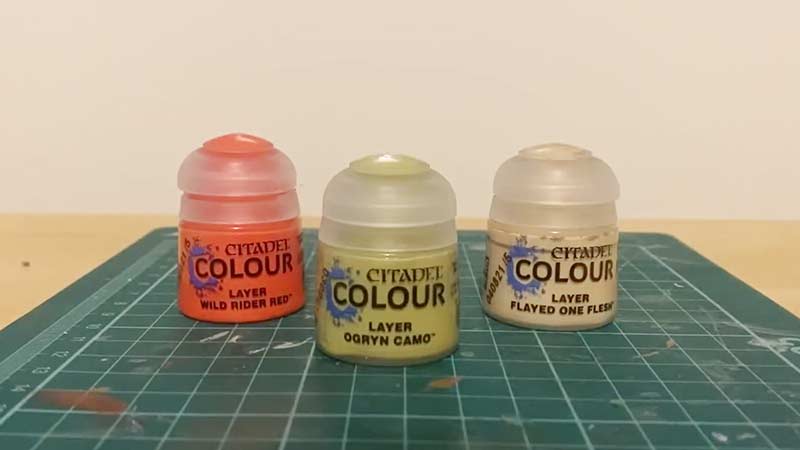
Yes, Citadel paints are water-based acrylic paints. This characteristic is one of the defining features that contribute to their popularity among miniature painters, especially in the tabletop gaming community.
The water-based formulation makes Citadel paints user-friendly and comes with several advantages for hobbyists engaged in painting miniatures.
Key characteristics of Citadel paints being water-based include:
Ease of Use
Water-based acrylic paints are known for their ease of use. They can be thinned with water for different consistencies, allowing painters to achieve various effects and techniques.
Quick Drying
One of the notable features of water-based acrylics is their relatively quick drying time. This allows artists to build up layers, apply multiple coats, or move on to detailing without significant wait times.
Versatility
Citadel paints, being water-based, are versatile and suitable for application on different materials commonly used in miniature models, such as plastic, metal, and resin. This versatility is essential for the diverse range of miniatures found in tabletop gaming.
Clean-Up
Cleanup is straightforward with water-based paints. Brushes and other painting tools can be easily cleaned with water, reducing the need for harsh solvents.
Non-Toxic
Water-based acrylics are generally considered non-toxic, providing a safer painting environment for hobbyists. This is especially important for those who may spend extended periods working on miniature projects.
What Is Citadel Paint Used For?
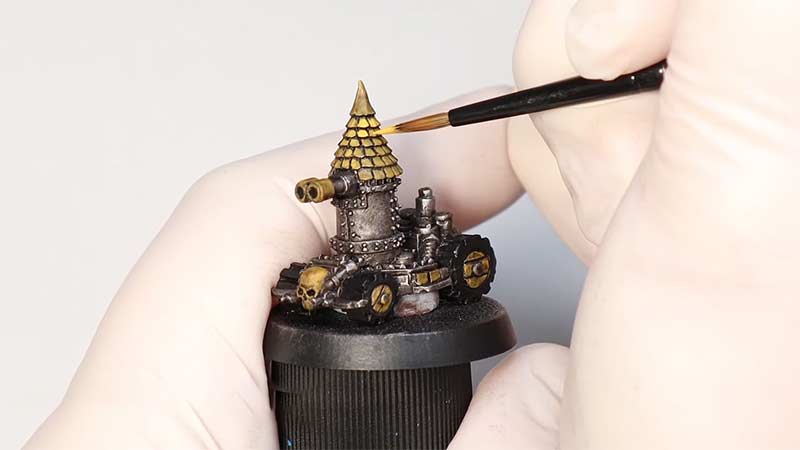
Citadel paint serves as a specialized artistic medium crafted for a singular purpose: the intricate art of miniature painting.
Widely recognized in the realm of tabletop gaming, Citadel paints, produced by Games Workshop, find their primary application in bringing gaming miniatures to life.
Key purposes of Citadel paint include:
Miniature Painting
Citadel paint is crafted to meet the unique needs of miniature painting. It provides hobbyists with a versatile and high-quality tool for bringing intricate and detailed miniatures to life.
Tabletop Gaming
Miniatures painted with Citadel paints are often used in tabletop wargaming. The vibrant colors and detailed painting enhance the visual appeal of gaming figures, contributing to the overall gaming experience.
Model Detailing
Citadel paints are well-suited for adding fine details, highlights, and shading to miniature models. They allow hobbyists to showcase their creativity and skill in bringing out the nuances of the sculpted figures.
Terrain and Dioramas
In addition to miniatures, Citadel paints can be used for painting gaming terrain and creating dioramas. The range of colors and types available caters to a variety of projects beyond individual miniatures.
Hobbyist Projects
Citadel paints are popular among hobbyists engaged in various modeling projects. Whether it’s painting model train sets, creating custom figurines, or other crafting endeavors, Citadel Paints offers a reliable and vibrant color palette.
Customization
Hobbyists often use Citadel paints for customizing their gaming miniatures. This includes creating unique color schemes, adding personalized touches, and achieving specific thematic effects on the models.
Collecting and Display
Many hobbyists paint miniatures as a form of artistic expression and for the joy of collecting beautifully painted figures. Citadel paints contribute to creating visually appealing collections that can be displayed with pride.
FAQs
Can Citadel paint be used on surfaces other than miniatures?
While Citadel paint is formulated for miniature painting, its versatility allows it to be used on various surfaces. However, its composition and characteristics are optimized for miniature materials.
What makes Citadel paints different from other paints?
Citadel paints are specifically tailored to the unique needs of miniature painting. They offer a comprehensive range of colors and types, such as base paints, layer paints, and specialty paints, making them well-suited for achieving intricate details on miniatures.
Are Citadel paints toxic?
Citadel paints are generally considered non-toxic. They are water-based acrylic paints, making them safer to use, especially for those spending extended periods on miniature painting projects.
Can Citadel paints be thinned or mixed with other brands of paints?
Yes, Citadel paints can be thinned with water and are generally compatible with other acrylic paints. However, for consistent results, it is often recommended to use paints within the same brand.
How do I choose the right type of Citadel paint for my project?
Citadel paints are categorized based on their use in different stages of miniature painting. Base paints for primary colors, layer paints for highlights, and specialty paints for specific effects. Choose based on your desired outcome and the technique you plan to use.
To Recap
Citadel paints transcend the realm of ordinary pigments, embodying a vibrant spectrum meticulously crafted for the intricate art of miniature painting.
As a pinnacle in tabletop gaming, these water-based acrylics by Games Workshop offer more than color; they unlock a gateway to imaginative storytelling, personal expression, and a thriving community of hobbyists.
From base to layer, shade to specialty, each painting serves as a brushstroke in the narrative of gaming universes.
Citadel paints have earned their place not just on palettes but in the hearts of artists and gamers alike, leaving an indelible mark on the dynamic canvas of miniature craftsmanship.
Leave a Reply